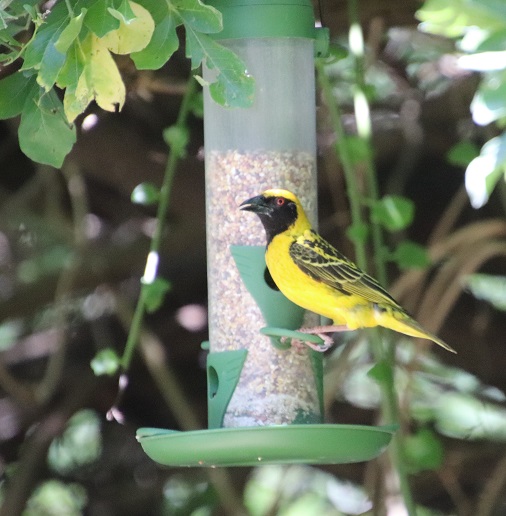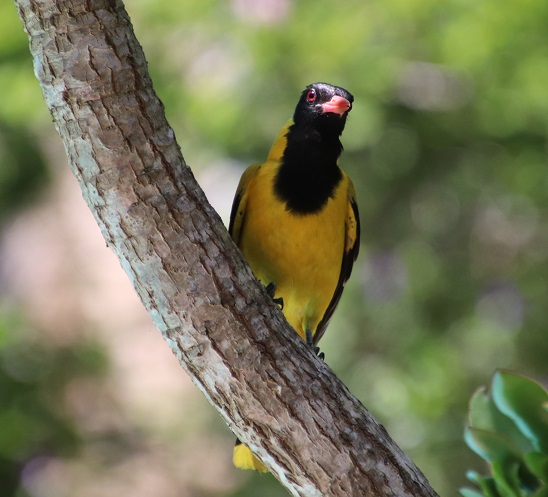I have not spent a great deal of time at home this month nor have I used my camera much. While it has been a particularly busy month, I have enjoyed watching a pair of Knysna turacos fly across the garden now and then and hearing their rasping calls during the day. Cattle egrets abound, thanks to the presence of the Urban Herd, and my favourite view of them is when they fly across the garden en masse at the end of each day as they make their way to their perches in the CBD. Of course we always have Laughing doves that brighten each day with their cheerful burbling sounds. A Black-collared barbet or two have made occasional forays to the feeder – I am hoping to see more of them during the cooler winter months. We are still woken half an hour before sunrise every morning by the loud choruses of the Hadeda ibises that roost in the Natal fig tree in our garden and it has been fun watching Greater double-collared sunbirds feeding on the nectar of the Cape Honeysuckle flowers.
The weather has been very hot – some days have reached 38°C – making the various bird baths busy places for birds, such as this Olive Thrush.
The Cape Robin-Chat has also been a frequent visitor to this bird bath.
A different bird bath was favoured by a Speckled Pigeon.
Bronze Manikins also enjoyed visiting this one.
New visitors this month include a Southern Boubou which has become a regular visitor.
Others are a Red-fronted Tinkerbird, Cape Weavers, Amethyst Sunbirds, and a pair of Thick-billed Weavers. The latter have only appeared a few times – they never seem to spend much time here. Cape White-eyes, on the other hand, flit in and out of the shrubbery on a regular basis and enjoy visiting the nectar feeder we call the pub. Note that the photograph below is an old one: we no longer colour the sugar water as I have learned that the food colouring is not healthy for the birds.
My bird list for this month:
African Darter
African Green Pigeon
African Harrier Hawk
African Hoopoe
Amethyst Sunbird
Barthroated Apalis
Black-collared Barbet
Black-eyed (Dark-capped) Bulbul
Black-headed Oriole
Bronze Manikin
Cape Robin-Chat
Cape Turtle Dove
Cape Weaver
Cape White-eye
Cardinal Woodpecker
Cattle Egret
Common Fiscal
Fork-tailed Drongo
Greater Double-collared Sunbird
Grey-headed Bush Shrike
Grey-headed Sparrow
Hadeda Ibis
Knysna Turaco
Laughing Dove
Lesser-striped Swallow
Olive Thrush
Paradise Flycatcher
Pied Crow
Red-eyed Dove
Red-fronted Tinkerbird
Red-necked Spurfowl
Sacred Ibis
Southern Boubou
Southern Masked Weaver
Speckled Mousebird
Speckled Pigeon
Thick-billed Weaver
Village Weaver
White-rumped Swift
Yellow-fronted Canary






























